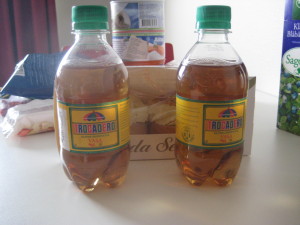Astrologers proclaim month of intermediate codecs. Number of blog posts about intermediate codecs doubles! (from zero)
Let’s look at Canopus codecs and their development.
Canopus Lossless
This is very simple lossless video codec: you have code tables description and coded difference from the left neighbour (or top one for the first pixel) for each component. For RGBA and YUV there are slight improvements but the overall coding remains the same.
Canopus HQ
This is an ordinary intermediate codec employing IDCT with 16×16 macroblocks in 4:2:2 format and interlacing support.
It has predefined profiles with frame sizes (from 160×120 to 1920×1080), number of slices and macroblock shuffling order (yes, like DV it decodes macroblocks in shuffled order).
Block coding is nothing special but quantising is. For every macroblock there can be one of sixteen quantiser sets selected. And for each block one of four quantising matrices can be selected from that set. Of course there are different quantiser matrices for luma and chroma (i.e. 128 quantising matrices in total, about 80 of them are unique).
Interlacing is signalled per block (in case it’s enabled for the frame).
Canopus HQA
This is Canopus HQ with alpha support. The main differences are flexible frame size (no hardcoded profiles), alpha component in macroblocks and coded block pattern. Coding and tables seem to be the same as in HQ.
Coded block pattern specifies which of 4 luma blocks are coded (along with corresponding alpha and chroma blocks). Uncoded blocks are filled with zeroes (i.e. totally transparent).
Canopus HQX
This codec combines both previous codecs and extends them for more formats support. While HQ was 4:2:2 8-bit, this one can be 4:2:2 or 4:4:4 and 9-, 10- or 11-bit support (with or without alpha).
There are changes in overall and block coding.
Frame is now partitioned into slices of 480 macroblocks and every 16 macroblocks are shuffled.
Blocks now have more adaptive coding. DCs are coded as the differences to the previous ones (inside macroblock component) and instead of being coded as 9-bit number they are now Huffman-coded and table is selected depending on component bit depth. Quantisation is split: now there’s a selectable quantiser and two quantiser matrices (for luma/alpha and chroma). AC codes are selected depending on quantiser selected for the block. So there are less quantiser matrices (two instead of seventy eight) but more VLC tables (CBP + 3 DC + 6 AC tables instead of CBP and single AC table).
Conclusion
Reverse engineering all those formats was obvious because they are not complex, obfuscated or C++ (which is usually both).
Shall I write decoders for them? Unlikely. The codecs are not too interesting (I’ve seen only one Canopus HQ sample and no HQA or HQX samples at all) and rather tedious to implement because of all those tables. And we have Canopus Lossless decoder already.
